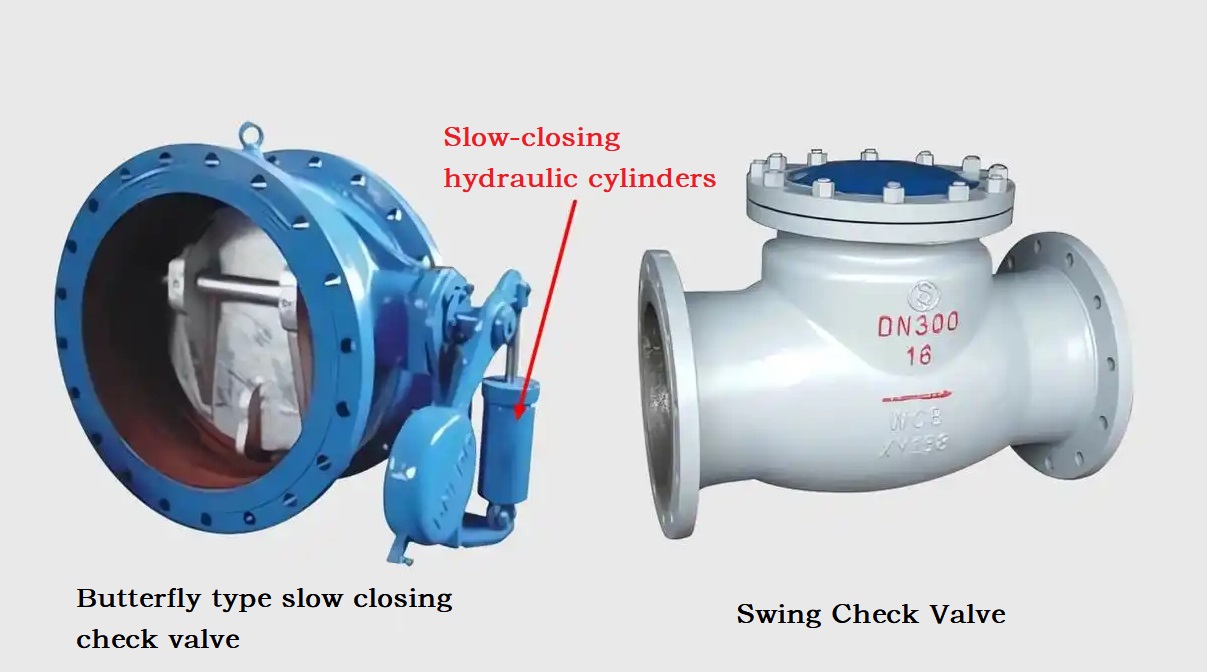In the industrial piping system, check valve is the key equipment to prevent the backflow of media. Butterfly check valves and swing check valves, although similar in function, differ significantly in structural design, application scenarios, etc. Kist Valve Group will analyze the differences between these two types of valves in layman's terms for you.
I. Basic function description
Butterfly check valves and swing check valves are both devices used to prevent backflow of liquids, and both can realize the protection functions such as light-load starting pumps and eliminating water hammer. The core component of both is a rotatable disk-shaped valve plate, but the specific structure and application scenarios are significantly different.

Second, the butterfly check valve and swing check valve 5 core difference comparison
1, industry standard differences
Butterfly check valve mainly follows:
CJ/T 282-2008 (urban water supply standards)
JB/T5299-2022 (industrial control standards)
Swing check valve applicable standards:
GB/T 12236 (petrochemical industry)
API6D (International Petroleum Standard)
GB/T 13932 (general industrial standards)
2、Mechanical structure comparison
The key difference lies in the position of the rotary axis:
Butterfly type: the rotating shaft passes through the center of the valve plate and is located inside the flow path.
Swing-open type: the spindle is at the edge of the sealing surface, located in the outside of the flow path.
Schematic illustration:
Butterfly → | valve plate | shaft in center
Swing-away → edge of valve plate → shaft outside
3、Slow-close design application
Butterfly check valves (especially large diameter type):
Standard with slow-closing structure (e.g. pipe force valve, hydraulic valve)
Effective relief of water hammer
Applicable pipe diameter: maximum DN5000
Ordinary models without slow closing function
Special models such as HH44X with slow closing
Commonly used pipe diameter: DN15-DN600
4、Differences in applicable scenes
Butterfly type is more suitable for:
Water system
Low/medium pressure pipelines
Clean water environment
Rotary type is more applicable to:
Water/steam/oil/chemicals
Low/medium/high pressure environments
Wide choice of materials (cast iron to special alloys)
5、Piping connection
Butterfly type is commonly used:
Flange connection (large diameter)
Clamp connection (small diameter)
Swing-open type is optional:
Threaded/flange/welded etc.
Clamp/pair clamp and other special connections

III. Strengths and weaknesses analysis table
| Type | Strengths | Weaknesses |
| Butterfly | Small size, light weight, fast switching, suitable for large caliber | Weak sealing, not suitable for impurity media |
| rotary open | Good sealing, high pressure and temperature resistance, easy maintenance | Complex structure and high cost |
IV. Decision-making guide for selection
Selection of butterfly type case:
✓ Limited installation space
✓ Need to close quickly
✓ Conveying clean medium
The case of selecting the rotary opening type:
✓ Medium contains impurity particles
✓ High pressure/high temperature conditions
✓ Multiple connections required
Practical application recommendations:
Check media properties (cleanliness/viscosity).
Confirm system operating pressure rating
Measure actual installation space in piping
Evaluate maintenance accessibility needs
Consult with a qualified technician for confirmation
V. Maintenance Points
Butterfly maintenance points:
Regularly check the spindle lubrication
Pay attention to seal wear
Clean up the deposits in the valve cavity
Rotary type maintenance points:
Check hinge mechanism flexibility
Monitor sealing surface integrity
Prevent impurities from jamming the valve plate
By understanding these key differentiators, users can select the most appropriate type of check valve for their actual project needs, ensuring the safe and efficient operation of their piping system. It is recommended to keep this guide as a reference manual for selection, so that when encountering a specific project, you can make a quick comparison decision.